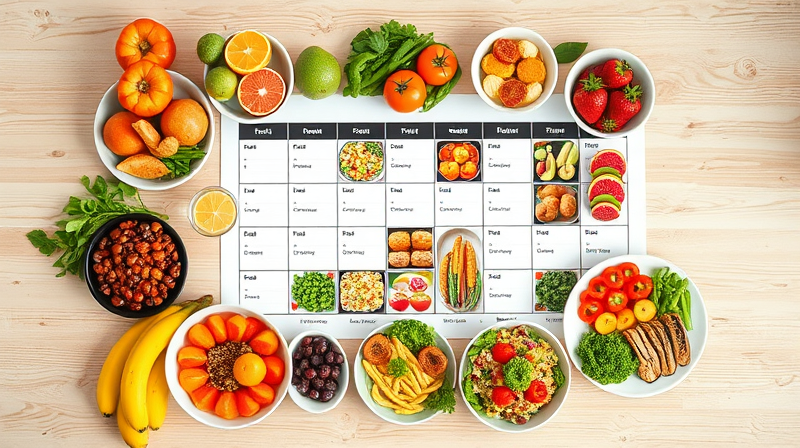Intermittent fasting is more than just a trend – it’s an inspiring, flexible eating pattern that can help you discover a healthy balance between fasting and nourishing your body. This guide is designed to provide you with a clear and engaging insight into intermittent fasting, helping you to embark on a journey that is both sustainable and personalized.
Many people unknowingly practice intermittent fasting on a daily basis. For instance, if you've ever eaten an early dinner, slept through the night, and then skipped breakfast before lunch, you have already given your body a break from constant digestion. This natural pause offers your body the opportunity to reset and rejuvenate.
Understanding the Basics
At its core, intermittent fasting is not a diet but rather an eating schedule that reallocates your food consumption to specific time frames. During fasting periods, you allow your body to rest by not consuming calories or consuming very few of them. When the eating window opens, you can resume your normal diet, ideally focusing on nutrient-rich, whole foods.
Fasting and eating windows aim to improve your metabolic health by giving your body time to repair and detoxify itself. The key is to create a routine that aligns with your natural rhythms and lifestyle preferences. By doing so, you can cultivate a practice that is not only beneficial for weight management but also promotes overall well-being.
Popular Methods of Intermittent Fasting
There are several methods to choose from, each catering to different lifestyles and levels of experience. Whether you are just starting out or are looking to adopt a more rigorous approach, intermittent fasting can be adapted to meet your needs.
- 12-Hour Fast: This simple method is ideal for beginners. Restricting your eating window to 12 hours a day means you naturally incorporate your sleeping hours into the fasting period. For example, if you finish your dinner at 7 p.m., you can wait until 7 a.m. the next day for breakfast. This approach eases you into the practice without overwhelming your body's natural rhythms.
- 16:8 Method: One of the most popular and sustainable forms is the 16:8 method, which requires fasting for 16 hours and enjoying an 8-hour eating window. Common windows include 12 p.m. to 8 p.m. This approach is favored because it allows you to enjoy two main meals and possibly a snack, all while skipping an unnecessary morning meal.
Different methods provide the flexibility needed to adapt intermittent fasting into your daily routine, ensuring you can choose what works best for your personal schedule and lifestyle.
How to Begin Your Journey
For beginners, the initial step is to take inventory of your current eating habits. This simple act of observation can help you understand just how naturally your body might align with a fasting pattern. Once you have a clear picture, consider these practical steps:
- Start with a 12-hour fast: This is a gentle introduction to fasting. By choosing a 12-hour window, you can gradually begin training your body to adapt to longer periods without food.
- Adjust your evening routine: Try to finish your dinner or evening snack by 6 or 7 p.m. This slight adjustment can pave the way for a smoother transition to longer fasting intervals.
- Gradually extend your fasting window: As your body gets used to the initial 12-hour fast, consider extending this period to 14 hours, and eventually to 16 hours if you feel comfortable. Incremental changes can lead to lasting success.
- Set clear timings: Use reminders or alarms to signal the start and end of your eating window. This practice helps maintain consistency and prevents overeating or prolonged fasting beyond your comfort zone.
The beauty of intermittent fasting lies in its flexibility. There is no one-size-fits-all approach, and what matters is finding an eating pattern that makes you feel energized and satisfied.
Embracing Flexibility and Sustainability
While intermittent fasting offers a range of health benefits such as improved metabolic function and better weight management, it is important to remember that it is not a rigid program. Rather, it is a framework that you can adapt. You might incorporate fasting into your daily routine, choose to skip meals occasionally when you’re not hungry, or even adopt fasting on certain days of the week to suit your personal and work schedule.
Finding a sustainable approach is the ultimate goal. Your body is unique; what works marvelously for one person may not yield the same results for another. Experiment with different fasting windows and observe how your body responds. This intuitive approach enables a more natural transition into a healthier lifestyle.
Moreover, intermittent fasting encourages you to be mindful of the quality of the food you consume during your eating periods. Focusing on balanced meals rich in nutrients ensures that you are fueling your body properly, which enhances overall well-being and energy levels.
Remember, consistent happiness and health rarely come from strictness but rather through balance and listening to what your body needs. As you learn more about your habits and responses, you can tailor intermittent fasting to essentially become a tool for both physical and mental rejuvenation.
In your journey, it's important to stay patient and kind to yourself. Celebrate small wins and acknowledge the progress you make along the way. Ultimately, intermittent fasting is about finding harmony between eating and fasting, allowing your body to operate at its best potential.
Embrace the practice with a mindset focused on growth and flexibility, and be open to tweaking the process as you become more attuned to your body’s signals. This approach will help you sustain the practice in the long term, fostering a happier, healthier you.
Ultimately, intermittent fasting is a personal journey towards embracing a lifestyle that prioritizes your health and well-being. With dedication, persistence, and a balanced approach, you are setting the stage for a more energetic and fulfilling life.








